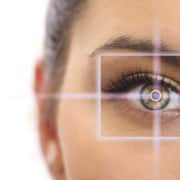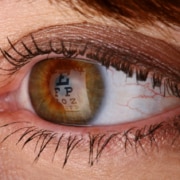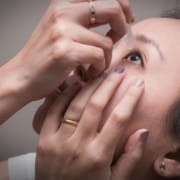6 simple steps to improve your eye health
It’s essential to be good to your eyes, especially as you age. Even if your eyes feel healthy and you don’t wear glasses or contacts, you need to think about how to maintain and improve your eye health. Here are six simple steps you can take to keep your eyes healthy and stave off age-related vision problems for as long as possible:
Eat a well-balanced diet. Eating well has many health benefits. Nutrients such as omega-3 fatty acids, lutein, zinc and vitamins C and E may help prevent or delay the onset of vision problems such as cataracts or macular degeneration. Green leafy vegetables, oily fish such as salmon and tuna, eggs, nuts, beans and oranges or other citrus fruits are easy ways to get those essential vitamins and nutrients.
Maintain a healthy weight. Obesity can increase your risk for type 2 diabetes, which is a leading cause of cataracts and diabetic retinopathy, which can cause vision loss and blindness in adults.
Watch your blood pressure. High blood pressure can increase your risk of some eye diseases such as hypertensive retinopathy. This is when hypertension causes damage to the blood vessels in the retina of the eye.
Quit smoking. Smoking makes you more prone to getting cataracts and other eye diseases. Talk to your doctor about smoking cessation programs and medications to help you kick the habit.
Wear sunglasses and wide-brimmed hats. Protecting your eyes from the sun’s harmful ultraviolet rays is an easy way to maintain eye health, as too much UV exposure increases your chances of cataracts and macular degeneration. Sunglasses that block 99-100% of UVA and UVB rays are most helpful. Polarized lenses are designed to reduce glare while you’re driving.
Take a break from your computer and phone. Staring at a computer or phone screen for too long can cause eye strain, blurry vision, dry eyes, trouble focusing at a distance, and more. Be sure you take breaks every 20 minutes to rest your eyes. Look 20 feet away for 20 seconds at a time.
Get an eye exam. Regular eye exams are essential to staying on top of any problems and spotting any diseases and conditions early, when they’re easier to treat. To learn more about improving the health of your eyes, schedule your next exam with Dr. Jeffrey Maehara at Maehara Eye Surgery & Laser today by calling 808.955.3937










 One of the most ironic things about dry eye is that it can actually cause your eyes to tear excessively.
One of the most ironic things about dry eye is that it can actually cause your eyes to tear excessively. 